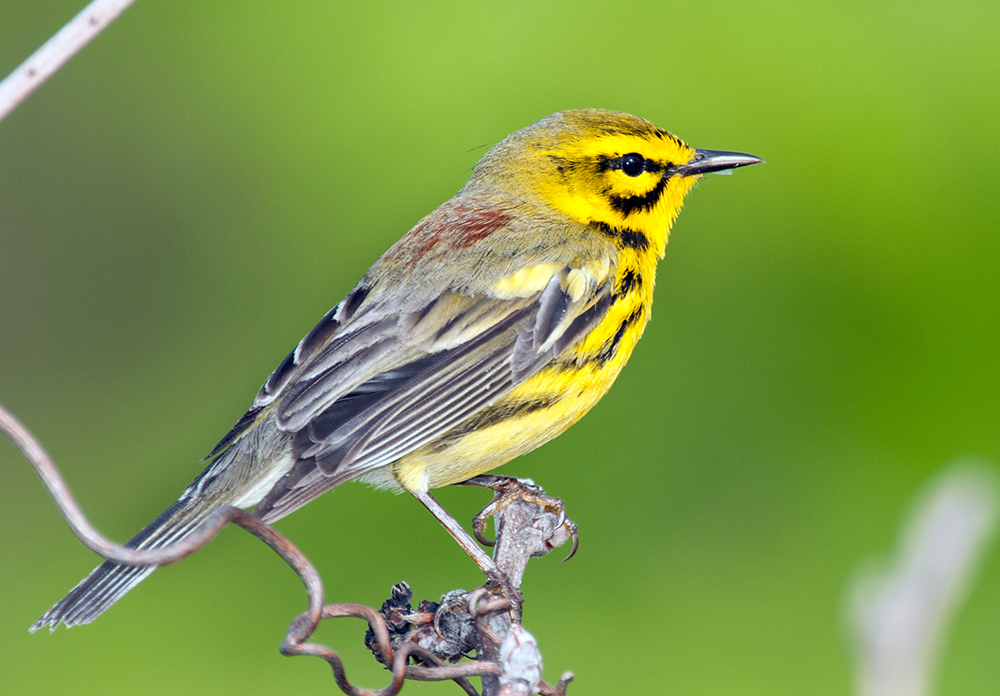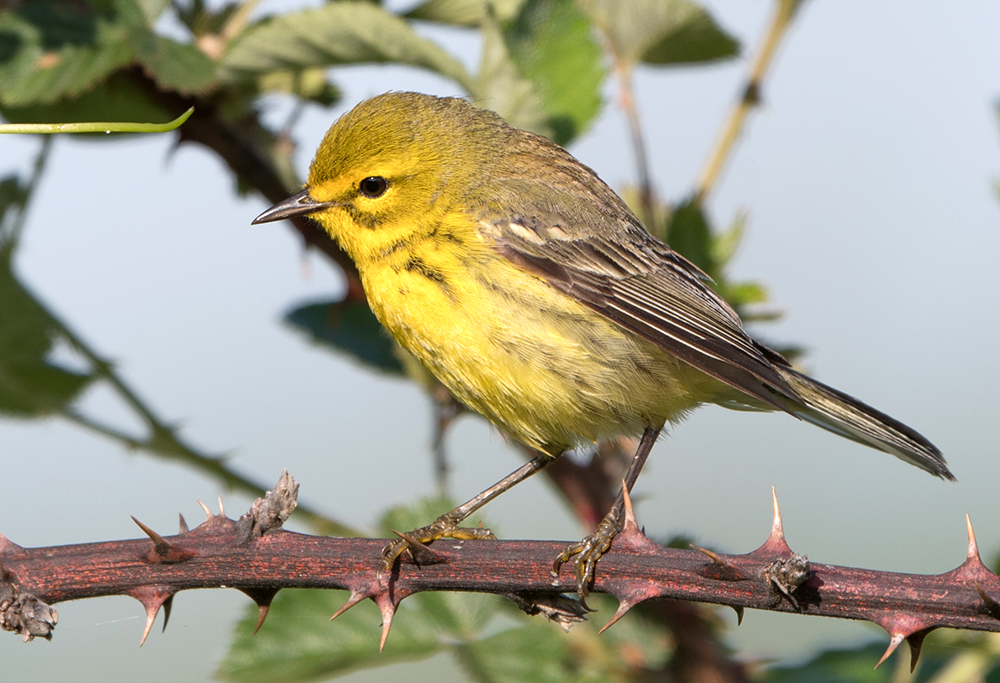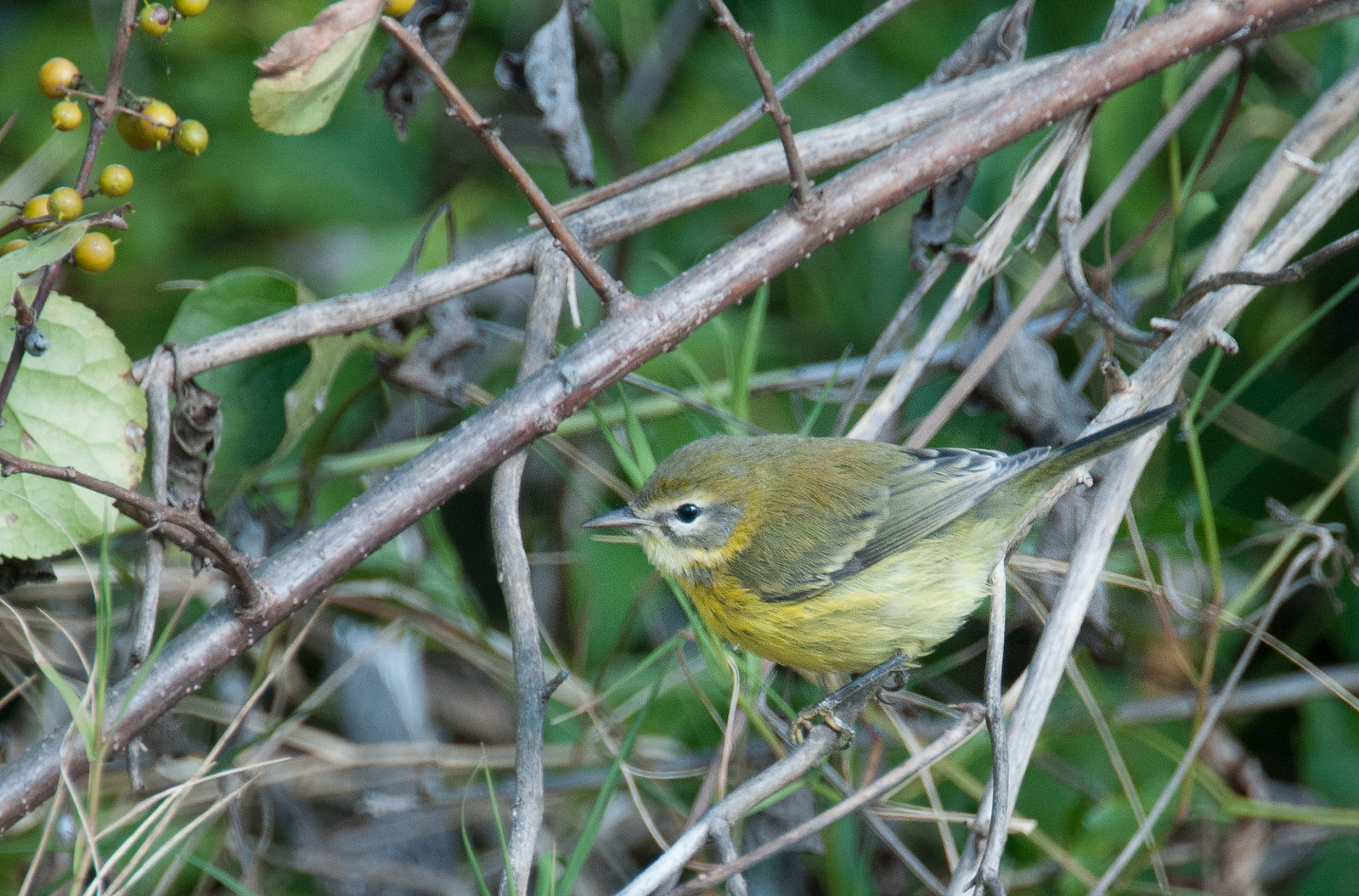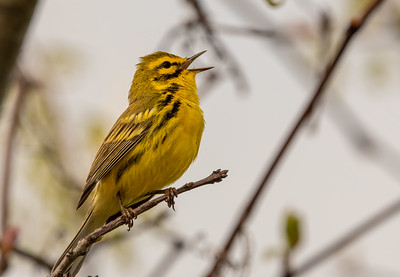| Early Spring Date: | April 18 |
| Late Spring Date: | May 23 |
| Best Dates to See in Spring: | April 24 - May 3 |
Spring: Prairie Warblers are common in the Washington metro area, but not at Monticello Park. In most years, 5 or fewer sightings have been recorded. They are most likely to be in the park around the end of April or the beginning of May. Prairie Warblers nest at Occoquan Bay National Wildlife Refuge, and if you go early on a morning in early May, you should be able to find one singing in a tree or bush.
Fall: Prairie Warblers are rarely seen at Monticello during the fall. Because they like to forage near the canopy, they are difficult to find if they are not vocalizing.
Where to See Them in the Park
Prairie Warblers generally are seen in the mid-story and above. Occasionally, they will forage lower or go into the stream. You are more likely to hear a Prairie Warbler at Monticello than to see one.
Physical Description

Prairie Warblers frequently bob their tail while foraging. The male is bright yellow on the face and underparts. He has a black line through his eye and another that curves down from the bill to frame his yellow cheek. He has a bright yellow line over his eye and black streaks on his flanks. The back is grayish with a dark red patch.

The female looks like a male with washed-out plumage. The markings on her face and flanks are gray rather than black, and the reddish patch on the back can be difficult to see.

Fall: Fall adult plumage of both sexes is similar to spring plumage, but it is slightly duller. First-year birds of both sexes have gray under their eyes.
Vocalizations

The most common song of Prairie Warblers is an unmistakable loud trill that rises up the musical scale. They sometimes sing a slower version of the rising song.
Hear the vocalizations of the Prairie Warbler.Notes
Prairie Warblers are one of many badly-named warblers. They do not associate with prairies, preferring forest edges. In this instance, John James Audubon rather than Alexander Wilson was the culprit. Birds seen during migration often behave differently than when they are on their breeding or wintering grounds, which is why you should not make generalizations about any migratory species you see at Monticello based on their behavior in the park.
Origin of Names
Common Names: Prairie because Audubon thought they were "found in the prairies along the skirts of the woodlands". The New World Warblers were named for their similar appearance to European warblers, to whom they are not related. Most of the New World warblers do not warble (sing continuously with notes that change frequently).
Genus Name: Setophaga means moth eating.
Species Name: Discolor means of different colors.
Prairie Warbler video footage
Return to the Index
